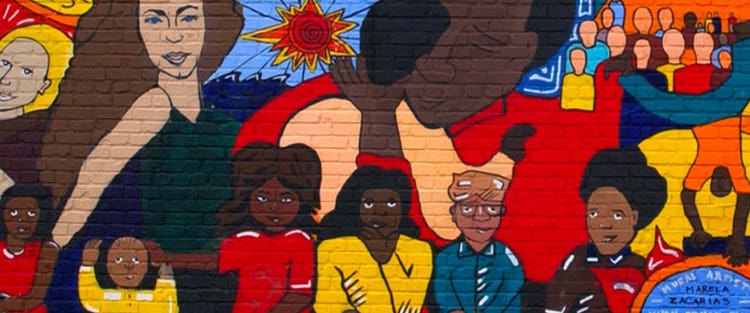<p><span class="medium"><br>October 7, 2022</span></p>
It’s time to close the gap for Hispanic tech professionals
<p><b>Technology career paths for Hispanic and Latino/a professionals in the US are much harder and longer than they need to be. Here’s how to fix that.</b></p>
<p>As a tech professional with deep Hispanic roots, I often hear people say, “If you can do it, others can do it.” But growing a career in technology as a member of the Hispanic community, especially in the US, isn’t so simple.</p> <p>Despite the surging tech boom in Latin America, where professionals from the region are among the most requested by global companies, Hispanics and Latinos in the US continue to face generational inequities and cultural barriers to entry that make the path to tech careers harder, longer and, for many, seemingly impossible. While the tech industry has frequently acknowledged the need to do better, the Hispanic community, who make up over 17% of the overall US workforce, <a href="https://www.pewresearch.org/science/2021/04/01/stem-jobs-see-uneven-progress-in-increasing-gender-racial-and-ethnic-diversity/?utm\_content=buffer8c9c5\&utm\_medium=social\&utm\_source=twitter.com\&utm\_campaign=buffer" target="_blank" rel="noopener noreferrer">represent only 8%</a> of the science, technology, engineering and math (STEM) field.</p> <p>The ever-evolving tech industry is continually vying for talent and unique perspectives that bring disruption to the industry, and Hispanics are key to closing the gap. There is much we can do to reduce the divide and embrace the distinctive viewpoints that the Hispanic community brings to the table.</p> <h4>Generational and cultural inequities</h4> <p>Growing up in a bilingual household, in the only state in the country where the majority population is Hispanic, I’ve had the opportunity to see life through several different lenses. My family’s ancestral land in the mountainous region of northern New Mexico is an area that was originally part of Mexico and became a US territory following the Mexican-American war.</p> <p>My grandparents grew up working the land and living in homes with no indoor plumbing or utilities, and baking was done in an <i>adobe horno</i> (oven). Modern living was a luxury of daily life my great-grandmother would not know until moving to Albuquerque in 1970.</p> <p>Although New Mexico became a state in 1912, schools in that region were still taught in Spanish during my grandparents’ generation, and the only available education ended after middle school. My grandfather eventually took a job with a railroad in Wyoming where he worked as a laborer for 30 years.</p> <p>My mother’s generation was the first to be raised in a city, graduate high school and work in an office setting. After my grandfather retired, we moved to Albuquerque to be closer to family. I grew up in the beautiful southwestern desert in a comparably comfortable life, but college was still out of reach, and tech careers were not available in our circles. Like many others in underserved communities, I joined the military as a pathway to opportunity.</p> <p>During my 10 years in the Navy, I earned my bachelor’s degree, followed by nine years in the public sector where I utilized the GI Bill to earn a master’s degree. As a military family, we moved often, but I eventually found my footing with a career in the healthcare sector of a global IT company. With the change in career focus, I went back to school to earn an MBA.</p> <h4>Closing the gap</h4> <p>So while it’s not impossible to carve out a place in the technology field, Latinos in the US experience some of the most noticeable disparities in terms of representation within STEM fields.</p> <p>This is driven in large part by inequities in educational support, systemic issues in the tech industry, the generational wealth gap and bias, which is especially true for Hispanics who have an “accent” and/or darker skin. Our community’s rich and extensive history is reflected in the diversity of its people, from Afro-Latino, Asian Latino, Boricua, Indigenous, Chicano/a, Mexican, Puerto Rican, Dominican, Cuban, Hispanic, Latino/a to the inclusive non-binary Latinx.</p> <p>There are ways, however, to close the gap and bring parity to the Hispanic community’s prevalence in STEM. It requires companies to be purposeful in their recruiting, outreach, marketing and financial giving in ways that meaningfully increase Latino <i>and<b> </b></i>Latina representation in after-school programs, summer camps, high school STEM classes, universities, tech certifications and, ultimately, corporations.</p> <h4>Meaningful action</h4> <p>Below are a few the ways we can create a STEM pipeline for all members of the Hispanic and Latino/a community.</p> <ol> <li><b>Education programs. </b>Companies need to support the introduction of STEM programs beginning in elementary school, particularly in underserved communities. By introducing STEM skills and digital literacy at an early age, students can be exposed to a world of opportunity. Creating volunteer programs that work with these types of organizations can do just that.<br> <br> <b></b></li> <li><b>Mentorship programs. </b>STEM skills aren’t enough. We need to guide and mentor students—from elementary school through college—to show them the possibilities that exist. By providing resources, guidance, support systems and connections, we can truly influence the types of career opportunities available to the Hispanic and Latino/a community.<br> <br> <b></b></li> <li><b>Campus recruiting programs. </b>Organizations need structured campus recruiting efforts that target colleges and universities with strong Hispanic populations. And businesses should partner with alliance programs geared toward minority representation in STEM. Bring these students into the fold with internships, retention programs, additional networking and mentoring opportunities.<br> <br> <b></b></li> <li><b>Career services.</b> Host STEM career job fairs in Hispanic and Latino/a communities. Create skilling and reskilling programs and offer scholarships for tech boot camps and certifications. These should be inclusive of computers, software and Wi-Fi, because underserved communities are less likely to have access to the tools needed to successfully complete these programs.<br> <br> <b></b></li> <li><b>Corporate communities. </b>Once organizations have educated, mentored and brought people on board, we need to ensure people have a safe place to land. Create resource groups where people can find community, mentors and a circle of support.<b></b></li> </ol> <h4>Diversity is key to the future of tech</h4> <p>The reality is, the future is digital, but it still isn’t diverse. And it should be.</p> <p>Ultimately, the IT industry provides products and services utilized globally by people from different cultures, ethnicities and socioeconomic backgrounds. Considering these billions of people have daily interaction with tech institutions, it should be incumbent upon businesses everywhere to ensure they have input from people of diverse backgrounds, in every sector of an organization.</p> <p>Without a true commitment from the tech industry to bridge the diversity gap, and build opportunities that address systemic barriers, it will take generations for the Hispanic and Latino communities to see meaningful representation in STEM. Together, we can help change generational setbacks, bring parity to our industry and better reflect the communities we serve.</p> <p>It’s time for the US, a country with over 65 million people of Latino/a descent, to become part of the Hispanics in tech movement.</p>
<p>Lisa Hershiser is a Client Relationship Manager at Cognizant. She served as a Cryptologic Technician Technical in the military before eventually moving into a career in healthcare technology.</p> <span class="small"><a href="mailto:Lisa.Hershiser@cognizant.com" target="_blank" new-data-attribute="TextLink">Lisa.Hershiser@cognizant.com</a></span>

